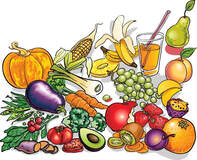|
Hunger is prevalent across Massachusetts, and since the outbreak of the Coronavirus, there has been a surge in those seeking hunger relief. In Eastern Massachusetts alone, food insecurity rates have increased by 70%, and an anticipated one in six individuals will have to withstand the struggle for at least the remainder of the year. Prolonged periods of malnourishment and deficiencies are health hazards, especially for growing children. Food-insecure households consume significantly fewer servings of whole foods and micronutrients, with a generally increased consumption of refined grains, added sugars, and saturated fats, which pack little nutritional value. Such dietary habits are linked to chronic diseases, such as diabetes, obesity, and heart disease, as well as poor mental health, such as depression and anxiety. While food insecurity rates themselves have fluctuated, statistics show consistencies in the composition of food-insecure populations. Trends indicate that the likelihood of food insecurity among Hispanics and Black non-Hispanics is roughly twice that of White non-Hispanics, echoing long-existing socio-economic disparities. Similarly, low-income families and those headed by a single parent are at substantially higher odds of food insecurity than married-couple households. Chronic diseases account for about 70% of annual deaths, undoubtedly making it one of the leading culprits of the increasing mortality rate, accentuating the importance of a well-balanced diet and adequate access to essential food groups.
Nutrition education should encompass the entirety of the population, and luckily, many programs are working to provide for food-insecure families. Food stamps, SNAP (Supplemental Nutrition Assistance Program), and the WIC (Women, Infants, and Children) provide underprivileged families with supplemental money to buy nutritious foods they can’t otherwise afford. Nevertheless, the Baker-Polito administration invested $56 million to combat drastically heightened numbers of food-insecure families due to the pandemic. The money was distributed among establishing a grant program that linked various food services to allow easy access to families receiving financial benefits as well as immediate relief for food banks the use of establishing is confusing here perhaps change this sentence. Food insecurity is not something to be ignored, and ultimately, its prevalence has opened my eyes to ways I can help; volunteering at food pantries and shelters are small actions that have validated my ability to aid the battle of this public health phenomenon. Works Cited “Feeding America Projects Rise in Food Insecurity Across Eastern MA in 2020.” The Greater Boston Food Bank, 4 June 2020, www.gbfb.org/2020/06/03/food-insecurity-rates-rise-2020/ Miller, Daniel P, et al. “Family Structure and Child Food Insecurity.” American Journal of Public Health, American Public Health Association, July 2014, www.ncbi.nlm.nih.gov/pmc/articles/PMC4056239/. Odoms-Young, Angela, and Marino A Bruce. “Examining the Impact of Structural Racism on Food Insecurity: Implications for Addressing Racial/Ethnic Disparities.” Family & Community Health, U.S. National Library of Medicine, 2018, www.ncbi.nlm.nih.gov/pmc/articles/PMC5823283/. Seligman, Hilary K, et al. “Food Insecurity Is Associated with Chronic Disease among Low-Income NHANES Participants.” The Journal of Nutrition, American Society for Nutrition, Feb. 2010, www.ncbi.nlm.nih.gov/pmc/articles/PMC2806885/. Singh, Namrata, and Anoop Saraya. “The Importance of Nutrition as an Integral Part of Disease Management.” The Indian Journal of Medical Research, Medknow Publications & Media Pvt Ltd, Dec. 2016, www.ncbi.nlm.nih.gov/pmc/articles/PMC5433295/. Image: http://foodandhealth.com/clipart.php/view/197/ Comments are closed.
|
|

